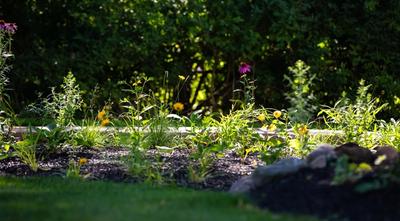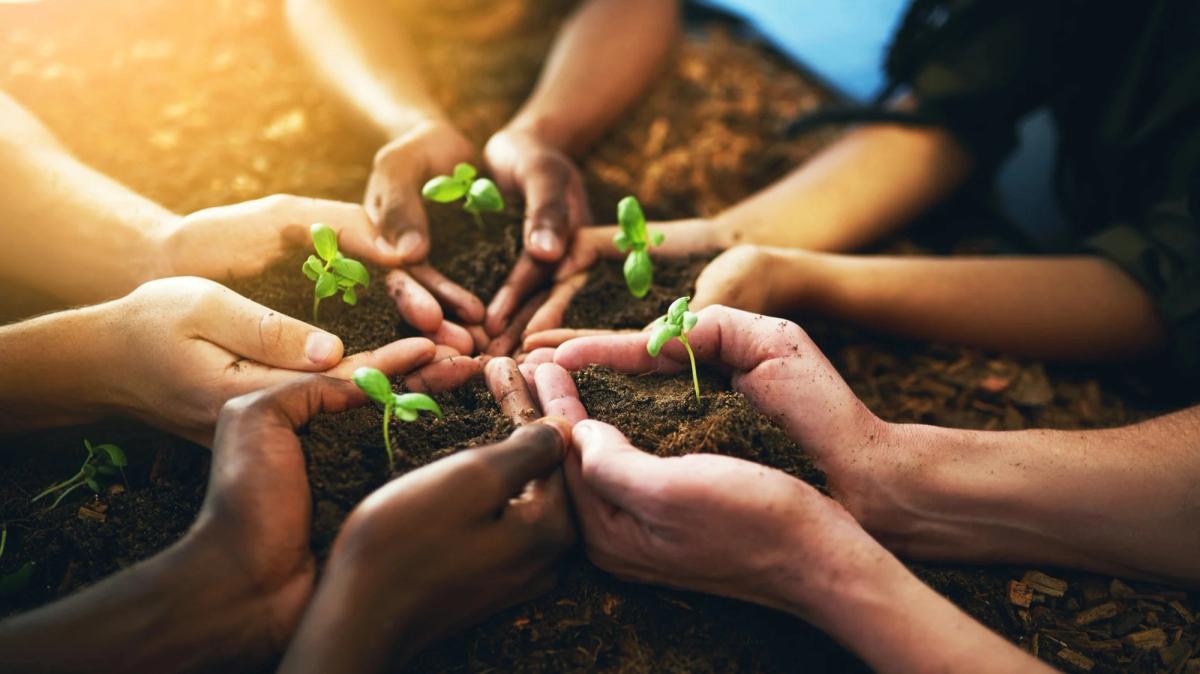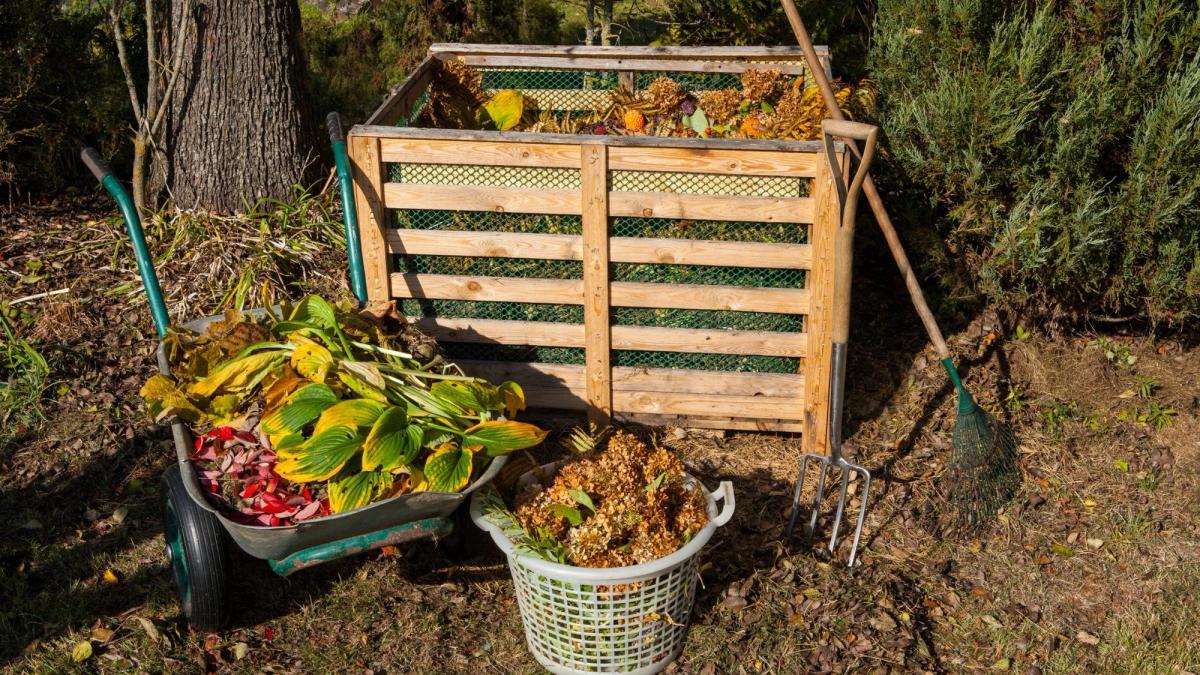Unlocking the Benefits of Sustainable Gardening Practices with Native Plants

Learn more about how native plants can help you engage in sustainable gardening.
The term “sustainability” has become a buzzword in the recent times with almost every industry trying to adopt sustainable practices to cater to the rising number of eco-conscious consumers. People are becoming more aware of the impact of their choices on the planet and are willing to change their long-held preferences to lessen environmental damage.
One clear example of the shift in people’s attitudes towards sustainability - is the growing trend of transforming conventional American landscape design from lawns to native gardens.
As homeowners become more aware of the impact of lawns on the environment, they are making a deliberate effort to adopt sustainable landscape practices using native plants. But, if you choose native plants, how are you actually engaging in sustainable landscaping?

What are native plants?
The term "native plants" refers to the plant species which naturally grow in a region, without human intervention. These plants have evolved over a period of time to adapt to the changing climatic conditions of the region and play an important role in balancing the local ecosystems.

What is sustainability?
Sustainability, on the other hand, refers to the ability to maintain and preserve resources for future generations. In simpler terms, sustainability is all about reducing our consumption of natural resources, finding better alternatives with less environmental impact and trying to “put back more than we take”.

A more sustainable way to garden
In the context of gardening, sustainability and native plants are closely linked concepts, as one cannot practice sustainable gardening without using natives. A sustainable garden is an entire garden that is designed and maintained in such a way that it preserves natural systems, reduces the consumption of natural resources and minimizes negative impacts on the environment.
Native plants tick all the boxes of the definition of a sustainable and environmentally friendly garden in the sense that they require less maintenance, conserve water, adapt easily to local weather and soil conditions and most importantly, promote biodiversity.

How do Native Plants Contribute to Sustainable gardening?
Here are some of ways that native plants can help you engage in sustainable gardening:
1. Water Conservation
Conserving water, a precious natural resource is a critical aspect of gardening. Natives are drought-tolerant plants which are equipped with natural hardiness to survive harsh climatic and soil conditions. Compared to lawns and non native plants, natives can do well with minimal watering and maintenance. With their deep root systems, natives also prevent soil run-off during rains and floods, thus improving soil health.
2. Reduction of chemical use
Since native plants easily adapt to the local soil and climatic conditions, they are hardy and less susceptible to pests and diseases . This reduces the need for using chemical fertilizers and pesticides which end up harming the local ecosystems.

3.Support Beneficial Insects and Pollinators
Native plant species attract pollinators like bees, butterflies, birds and small animals by offering them food and habitats. By incorporating a diverse range of native plants, gardeners can balance the local ecosystems and foster biodiversity.
4.Sustainable Weed Control Solution
Using native ground covers is an effective and sustainable solution to weed control. Ground covers crowd out the weeds by blocking sunlight and nutrients to them, which translates to fewer chemicals and reduced weed control efforts. Ground covers also help in saving water by trapping dew drops, gardening and rain water to prevent water loss due to evaporation.
5.Climate change mitigation
Climate change poses an existential threat not just to humans, but also to local wildlife. Adopting practices such as native plant gardening is important in order to mitigate detrimental environmental impacts and reduce our carbon footprint. Green patches filled with native species, act as carbon sinks that can trap planet-warming carbon dioxide and release more oxygen into the air. Natives also have a unique advantage over non-native species for forming vital connections with pollinators, which are essential for improving local wildlife habitats and boosting our agricultural production.

Tips for Starting a Native Garden
Join many gardeners in beginning this journey! Here are some tips to get you started:
Plant selection:
Choose plants that are native to your region and well-suited to the soil and weather conditions. Identify invasive species and keep them out of your plant selection list.
My Home Park can take the guesswork out of choosing the right plant for you! Our predesigned collections have pre-identified native plants for your specific zip-code.
Garden Design:
Design your garden by understanding the sun and water needs of the plants. It's also a good idea to group plants with similar requirements for easy pest management and optimization of available resources and nutrients.
My Home Park's predesigned native plant collections already take this into consideration, creating less work for you!
Water Supply:
Avoid water sprinkler systems and use water saving techniques like drip irrigation and mulching to reduce need for frequent watering. This can save water for future use.
Soil Health:
Replace synthetic fertilizers with organic material to ensure healthy soil that can play a crucial role in supporting wildlife.
Composting:
Stop discarding yard debris like lawn clippings, fallen leaves and broken twigs. Instead, add make a compost pile out of them that transforms garden waste into a nutrient-rich, fertile soil.

Whether you are a seasoned gardener or a beginner, implementing sustainable gardening practices with native plants is a rewarding and fulfilling way to contribute to our planet's health.
If you want to hop on to the sustainable gardening trend, we are here to support your journey! My Home Park offers pre-designed native plant collections suited to your region and yard conditions, making it easy for you to achieve your sustainability goals. We hope this article inspires you to think about which lawn areas can be easily transformed into more sustainable landscapes.
Together, we can take the first step towards a greener and sustainable future with the power of natives!


Share this article


